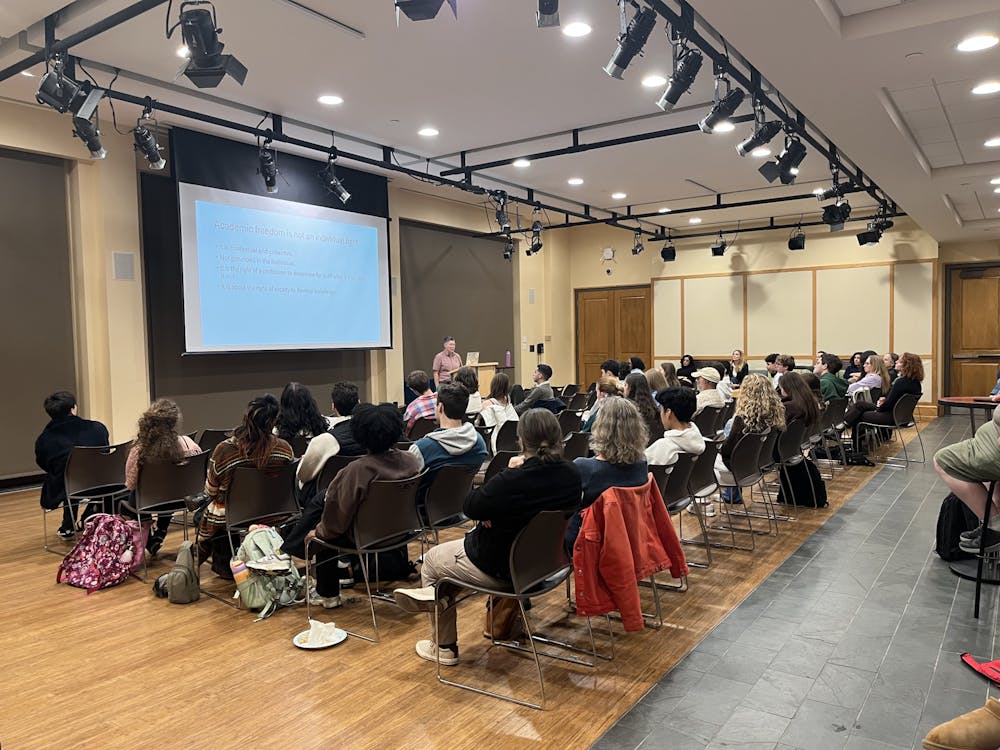The University of Richmond synchronized swim team quietly placed at the U.S. Collegiate Nationals at Stanford University earlier this month. The team accomplished this feat with a roster of only four women, squaring off against schools with up to six times more swimmers.
The Spiders found a way to defeat competitors that had more practice time, more experience and better facilities. Schools such as Arizona, Minnesota, Pennsylvania, Pennsylvania State, Michigan and Boston University had an edge in these categories, but Richmond held the edge in the final standings. It was an impressive accomplishment, considering Richmond's synchronized swim team is only a club sport competing against many varsity opponents.
To understand the synchronized swim team's success, an understanding of the sports is necessary.
"It combines the choreographing of dance, the coordination of gymnastics, and the athleticism of swimming," said sophomore Aayla Anderson, the team's co-captain.
Teams compete in eight events that are separated into two groups. The first four — the team event (4-8 swimmers), the trio, the duet, and the solo — are three-and-one-half minute routines performed to music. A panel scores these routines in a similar manner to a dance competition. Judges assess how well the routine is executed and synchronized, taking difficulty into account.
The remaining four events are called "figures." These are also judged by a panel, and the swimmers are assessed on how well they execute a set move, with an emphasis on height and control. The combined scores of seven of the eight events constitute the team's score.
Synchronized swimming was a varsity sport at Richmond from 1981-2001.
"The main reason to move the sport from varsity to club was that there is no NCAA-sanctioned championship," said coach Asha Bandal, a former Richmond swimmer.
Bandal was recruited for synchronized swimming and competed for four years at Richmond, but only one as an official varsity athlete. The demotion from varsity status led to a gradual decline in the program, as the Spiders finished fifth in 2001, sixth in 2002, eighth in 2003, and tenth in 2004. For the remainder of the decade, the team consistently finished around 13th-place in the season, and ended national competition.
That is until 2010 when the Spiders made a surprising jump to 9th place.
"Each of our four swimmers had a part in our impressive placement," Bandal said.
Sophomore Katherine Bull, who started synchronized swimming as a freshman, has already earned a spot as the co-captain. She placed eighth in her figures — the highest Spider finish out of any of the events.
Enjoy what you're reading?
Signup for our newsletter
"It shows a tremendous amount of dedication and natural ability on her part," Bandal said.
Freshmen Jennifer Jarboe had the second highest finish, placing 11th in her solo. Anderson and freshmen Arantxa Nin placed 14th in their duet, while Anderson, Nin, and Jarboe placed 15th in their trio. These routines take an incredible amount of time and preparation. It took almost six months to learn this year's choreography.
With a young team and a committed coaching staff, including assistants Jennifer Mitchel, Katie Cloutte, WC '09, and Erin McCracken, WC '05, the future looks bright for Richmond synchronized swimming.
Contact staff writer Brenton Lewis at brenton.lewis@richmond.edu
Support independent student media
You can make a tax-deductible donation by clicking the button below, which takes you to our secure PayPal account. The page is set up to receive contributions in whatever amount you designate. We look forward to using the money we raise to further our mission of providing honest and accurate information to students, faculty, staff, alumni and others in the general public.
Donate Now


